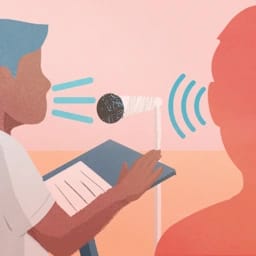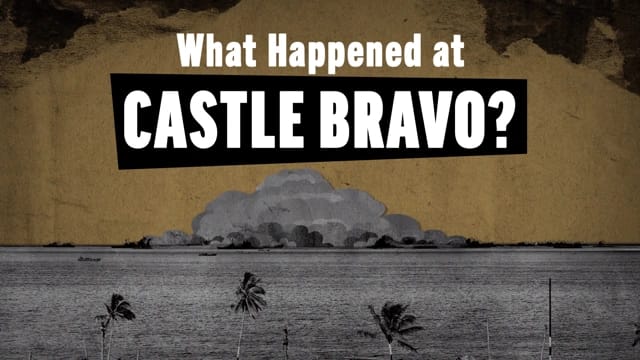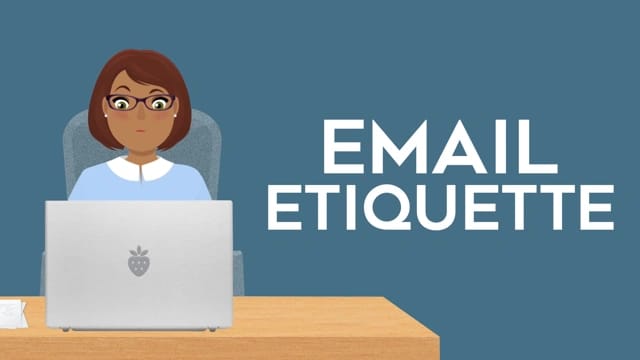9 Classroom communication skills activities for students
In this guide
Communication is KEY.
We have all probably heard and/or used this phrase at some point in our lives. We communicate on a regular basis and understand the critical role it plays in nearly every aspect of our lives.
Employers list the ability to communicate effectively as one of the top skills for jobs of the future. Educators complain that students struggle with basic communication skills like speaking clearly, asking questions, and writing grammatically correct.
Fostering classroom communication skills
No generation on Earth has had as much access to communication as kids in school today. Kids are connected with people all around the world and at all hours of the day. There are so many ways to be contacted that it seems to take more work to NOT communicate in today’s environment.
So why do so many educators and professionals feel like young people have severe deficits when it comes to communication skills?
In Because Internet: Understanding the New Rules of Language, Gretchen McCulloch explores the evolution of the English language and the rapid changes brought on by the Internet. She argues that our communication patterns and styles are directly influenced by the technologies that we use to interact with one another.
What on the surface may look like a communication deficit might better be explained as a communication misalignment. Communication technologies and patterns are evolving so quickly that there is a divide between established and emerging communication styles.
Students today do not necessarily struggle with communication. Instead, they lack the experience and examples of the more traditional and professional communication styles that are expected of them in school and job settings.
Rather than spending time worrying about or judging the communication styles of our students, educators can focus on helping them develop the skills expected of them in professional and academic settings.
Who knows, maybe one day I will be using emojis and internet slang in these articles but for now, I need to abide by the general norms that have been established in this domain.
1) Less is more
In school, assignments have a minimum word count or page count that students need to reach so they learn how to ‘fill’ pages. As a result, students can sometimes struggle to be concise and direct in their communication.
A few years ago, my students were fortunate enough to get the opportunity to participate in a pitch competition for their final project of the year. Students were given the task to research a relatively unknown story from history they felt should be made into an educational video.
The amazing team at Makematic worked with our students to help them prepare an effective pitch. Check out some of the winning entries here and are now being used by teachers around the world to teach about US history and culture:
- The Origin of Earth Day
- Castle Bravo: The Largest Nuclear Explosion in US History
- The Havasupai Project
One of the most engaging activities during this process required students to write a love or horror story using a maximum of 35 words.
At first, the students looked a bit overwhelmed but the results were fascinating (especially the one that combined a love AND horror story). I now use this idea in all of my classes at various times throughout the year. You can be very creative with the topics and it works in all subject matters.
This technique encourages students to be very intentional with their word choices and focus on the audience. It works brilliantly as an introduction to a topic and can also be used as a comprehension check by asking students to concisely summarise information. Ultimately, it helps students recognise the importance of structure and purpose to communicate effectively.

2) Talkers and listeners
I love building my classroom activities around robust discussions that include a variety of opinions on ambiguous and sometimes controversial topics. In every class I have ever taught, I usually get the same group of students volunteering and the rest of the class observing no matter the subject.
I have tried a variety of strategies throughout the years to get a more even distribution of participation but all of them felt forced and did not seem to have a lasting impact. I finally found an activity in Sarah Stein Greenberg’s Creative Acts for Curious People that focused on empathy and understanding between ‘talkers’ and ‘listeners’.
- Start by asking students to move to one side of the room or another depending on if they best identify as a ‘talker’ or ‘listener’ in classroom discussions.
- Give each group about 10 minutes to share similarities and differences in how they participate in that role.
- Then, ask each group to come up with a list of questions to ask the other group in order to better understand their perspective better.
If possible, have the two groups face each other while they alternate asking and responding to the questions. The best part of this activity is how the roles of ‘talkers’ and ‘listeners’ seem to be reversed during the discussion. ‘Listeners’ feel empowered in numbers and the ‘talkers’ become increasingly curious. In most classes, I have to stop the discussion before the students are done asking questions due to time constraints.
I have found that doing this activity early in the year helps create a more collaborative environment by recognising how each member of the class contributes the best. Effective communication needs both talkers and listeners so it is important to recognise the value in both roles. Participating in this experience gives everyone involved a bit more ownership in collaborative efforts going forward.
3) PECS – point, explanation, complications, summary
Have you ever felt like you understood someone less AFTER they finished speaking?
What about grading an essay and realising you have no idea what you just read?
I have not come across many individuals who intentionally try to waste time and energy talking in what amounts to a word salad of nothingness. Unfortunately, I have been stuck in those conversations where you feel like you are speaking a different language because you have no idea what the person is actually talking about.
In the classroom, I see this most often during class discussions. A student raises their hand. I call on them. They speak for a few moments. Then, a weird silence hits the room as anyone who is still listening realises they did not really address the topic being discussed.
Although this can happen due to nerves, one way to reduce these unfortunate occurrences is to teach students how to structure their responses in a specific manner. In the Think Fast, Talk Smart podcast, Matt Abrahams suggests using the PECS framework to clarify your messaging.
- P – Start with your point. What is your opinion or answer?
- E – Explain the reasoning behind your point. Why do you feel that way?
- C – Address any complications. What nuances or other factors might be involved that could affect your pint?
- S – Summarise your thoughts. What is the last thing your audience should hear to ensure they understand the main takeaway of your message?
This is perfect to introduce at the beginning of the school year during full class discussions on very fun and light topics to help students get practice before diving into more complicated curriculum. ‘What is your favourite movie?’ or ‘What is the best genre of music?’ are easy ones to get students speaking.
If you review this framework enough early on, hopefully, you will notice that not only do your class discussions become more fruitful but students also start asking more intentional questions to you and other classmates. The goal here is to improve the clarity of our communication.
4) Constructing an email
With a seemingly endless amount of social media and messaging apps available, our students are communicating digitally at a remarkable rate. Unfortunately, much of that communication is informal so it creates habits that may not be acceptable in typical academic or professional settings.
A couple of years ago, our school started the year by giving students a basic template to use when writing an email. It included the proper way to address the recipient and how to conclude or sign the message.
Although this was a step in the right direction, I found that I was still reading a lot of emails without a clear message. I knew who it was for and who it was from but many times I needed more information before being able to respond to the email appropriately.
Last year, I started teaching students a framework laid out in Guy Kawasaki’s Think Remarkable. As the former chief evangelist of Apple and the current chief evangelist of Canva, he has a lot of experience in professional communication strategies.
I give students the following guidelines based on the advice of Guy Kawasaki:
- Write a compelling subject line with a maximum of 5 words
- Use five or fewer sentences total in the email
- Include the following information
- What you want/need
- Why you want/need it
- When you need it by
- Any next steps or additional information
- Include a signature with your name and contact information
It may sound a bit harsh but I tell students I will not respond to their email unless they follow that general format. I receive so many emails and messages compared to 10 years ago that I need their help making sure I can accurately respond to each one in a timely manner.
Ultimately, I do not want them to miss out on an opportunity with a company, client, college, etc. because their digital message was unclear or incomplete.
Another activity is asking students to create a subject line pitch, check out this video for guidance on how they can do it.

5) The wordless conversation
One of the most interesting effects of new digital communication tools is how much communication occurs between individuals without actually seeing or hearing the other person. Although claims that 90% of communication is nonverbal might not be completely accurate, multiple studies show that our actual words are not as critical as other factors when it comes to expressing our ideas.
We live in an increasingly visual world and one with various forms of asynchronous communication so it is important to help students develop nonverbal skills. Since many of the courses I teach have a visual arts element to them I like to focus on using images to communicate.
I created a variation of ‘The Wordless Conversation’ activity in Creative Acts for Curious People to help students build relationships through non-verbal communication. I pair students up and give them 24 hours to communicate with each other without using any words at all. Most students choose to use text messaging on their smartphones but this can be done using a variety of options including email on Chromebooks, if needed.
- Before they start, I emphasise that the goal is to have a meaningful conversation about their day that includes activities, emotions, and people. They can use pictures, GIFs, emojis, or any other visual imagery as long as there are no words.
- At the end of the lesson, I tell them the assignment starts and will conclude the next time we meet.
- At the beginning of the next lesson, I ask each student to respond to the following questions in their notes:
- How did you feel over the course of the conversation?
- What did you learn about the other person?
- Then, give each pair about 15 minutes to review their visual conversation and clarify any misunderstandings or confusion.
- Also, have them keep track of elements of the conversation they felt were especially powerful or effective.
I love how this activity emphasises the role of nonverbal communication while also building or strengthening new relationships. The world is constantly communicating to them through nonverbal signals so it is really important to help our students develop that type of literacy as well.
6) Active listening
“I like to listen. I have learned a great deal from listening carefully. Most people never listen.”
-Ernest Hemingway
It is easy to overlook the role of the audience or the listener when we discuss communication because we usually focus on the speaker. In order for communication to be effective though, the information being conveyed needs to be received and understood.
Playing catch with yourself is really just throwing a ball. Communication without someone listening is just talking.
Active listening is a skill that needs to be learned. Our brain’s tendency when listening is to make connections to things this information is related to and start formulating our response for when the person is finished speaking. As a result, many times we either miss critical information or make the speaker feel unheard.
One of my favourite ways to help students become better active listeners is to put students in pairs and give them a topic to discuss. I then ask them to use the following guidelines during their discussion:
- Only one person can speak at a time
- When someone finishes speaking, the other person needs to wait 5 seconds before responding
- The beginning of each response should acknowledge or ask for clarification about something the other person just mentioned
- Avoid judging or arguing
- Use eye contact and welcoming body language (nodding head, open posture, smile)
I find it pretty fun to follow up this activity with a full class discussion to see how well students can continue active listening in a larger setting. Make sure to discuss the most challenging and rewarding parts of active listening to help students understand its importance as well as the need for continuous practice.
As the teacher, a great way to model this throughout the year is by making sure to pause for a few seconds before calling on the next student during class discussions. Students need to feel like they are being heard to participate rather than just filling time during an activity.
7) Least favourite subject
One of the biggest trends I have noticed in my students over the past few years is their growing unwillingness to engage in face-to-face conversations with adults and discuss uncomfortable topics. At our school site, we are regularly seeing students send emails to their teacher during class rather than speaking directly with them.
I recently started giving my students an assignment that requires them to have a brief conversation with one of their teachers. The goal is for students to learn about why they became a teacher, why they think their subject is important to learn, and their favourite part of their job.
The one twist to this assignment is that I ask students to interview the teacher of their least favourite subject. To be clear, it does not have to be a teacher they do not like but rather a subject area they are not interested in.
After students complete the interview, we discuss the experience as a class. My favourite part is hearing about their newfound empathy and understanding of their teacher. In addition, some of the fear or hesitation around having difficult conversations is reduced. This is a great way to encourage students to leave their comfort zone in a safe environment.

8) Calming the nerves
Google “Top Fears” and public speaking will be right up there at the top of the list. We have all probably experienced that overwhelming rush of anxiety when the proverbial spotlight is on us. One bad experience can lead to a powerful aversion for years to come.
For me, it was completely blanking on the Bible verse I was supposed to memorise for my communion when I was 13 years old. Even if I could forget that painful Sunday morning, my brother would still find a way to remind me at family gatherings.
Many students really struggle with oral presentations and do everything in their power to avoid them. In recent years it has been more common for students to be excused from these assignments which worries me in the long run.
I understand the need to make modifications for certain individuals but this trend led me to implement a couple of strategies as a way to help students overcome these communication fears instead of avoiding them. It is pretty hard to effectively communicate if we are too scared to even attempt it.
Breathing exercises have been shown to reduce stress and improve concentration in a wide variety of settings. After a friend of mine took a series of classes on breathwork, I decided to offer this as a strategy for students struggling with effective speaking.
The research and levels of techniques in this realm are extensive but I try to keep our approach fairly simple and easy to implement quickly. I encourage students to practice the following routine:
- Take a really deep breath in through the nose
- Exhale through the mouth while keeping your lips nearly closed so there is a slight resistance
- Repeat 3 times
In fact, while working on this article, I was watching the 2024 Paris Olympics with my son and we noticed how nearly every athlete appeared to use a breathing routine before and/or during their competition. If this can help the world’s greatest athletes, surely it is worth trying out in a secondary school Spanish class.
If you want to go one step further, encourage students to create a personal mantra they can recite to themselves before preparing to speak. Utilising positive self-talk as a simple routine can help block negative thoughts that inhibit effective communication.
This activity can be used for other purposes (e.g. test anxiety) but I have found it extremely helpful when it comes to communication. Knowing all of the right techniques for effective communication will not do much good if anxiety is preventing someone from utilising them.
9) Public speaking tips
Another reason so many people fear public speaking is that they have never explicitly been taught how to do it. If you think back to your own time as a student you can probably remember being required to give oral presentations in school.
Unless you were a Communications student at university, it is probably unlikely you ever studied or even had a direct lesson on public speaking. Knowing how to swim can reduce our fear of water so it only makes sense that some targeted education about giving presentations might help reduce anxiety around this activity.
In my Business class, I have my students read 10 tips for improving your public speaking skills to kick off our unit on presentations. I then ask each student to find a video online to watch of someone speaking and to look for as many of these tips as they can find. Historical speeches, TED Talks, and comedians are all great sources to look at for this step.
As a class, we then review a few of these videos and explore each tip with a specific example in more detail to help make the concept more concrete. This is also a great opportunity to sneak in a video covering some relevant course content while also having students analyse the speaking techniques.
The next step is to have each student create and perform a short presentation for the class. I tell students to focus on just three of the tips to start and build around that. Usually, students will implement more than three of them just by internalising them during the process.
Giving students a specific focus or requirement with upfront support seems to help distract them from their own nerves during the presentation. Their attention shifts to what they intend to do rather than how others may be viewing them.
References
- Abrahams, M. (Host). (2024, July 9). Communication Tips from the Classroom (No. 150) [Audio podcast episode] In Think Fast, Talk Smart: Communication Techniques. Stanford GSBB. https://open.spotify.com/episode/0dST6ZLwaIV9ZlsIpdYNnP
- Gallo, A. (2024, January 2). What Is Active Listening? Harvard Business Review. Retrieved July 29, 2024, from https://hbr.org/2024/01/what-is-active-listening
- How Much of Communication Is Nonverbal? | UT Permian Basin Online. (n.d.). UT Permian Basin’s Online Degree Programs. Retrieved July 28, 2024, from https://online.utpb.edu/about-us/articles/communication/how-much-of-communication-is-nonverbal/
- Kawasaki, G., & Nuismer, M. (2024). Think Remarkable: 9 Paths to Transform Your Life and Make a Difference. Wiley.
- McCulloch, G. (2019). Because Internet: Understanding the New Rules of Language. Penguin Publishing Group.
- North, M. (2020, March 17). 10 Tips for Improving Your Public Speaking Skills – Professional & Executive Development | Harvard DCE. Harvard Professional & Executive Development. Retrieved July 24, 2024, from https://professional.dce.harvard.edu/blog/10-tips-for-improving-your-public-speaking-skills/
- Stein Greenberg, S. (2021). Creative Acts for Curious People: How to Think, Create, and Lead in Unconventional Ways. Clarkson Potter/Ten Speed.Zaccaro, A., Piarulli, A., Laurino, M., Menicucci, D., Neri, B., & Gemignani, A. (2018, September 7). How Breath-Control Can Change Your Life: A Systematic Review on Psycho-Physiological Correlates of Slow Breathing. NCBI. Retrieved July 28, 2024, from https://www.ncbi.nlm.nih.gov/pmc/articles/PMC6137615/

Nick Schwab
briefcase iconLearning Experience Designer
Nick combines his background in psychology, education and design to create physical and digital experiences that empower, engage, and excite learners. His passion lies in constantly developing new learning pathways for students that challenge the status quo in education.
Other posts
Want more content like this?
Subscribe for blog updates, monthly video releases, trending topics, and exclusive content delivered straight to your inbox.















